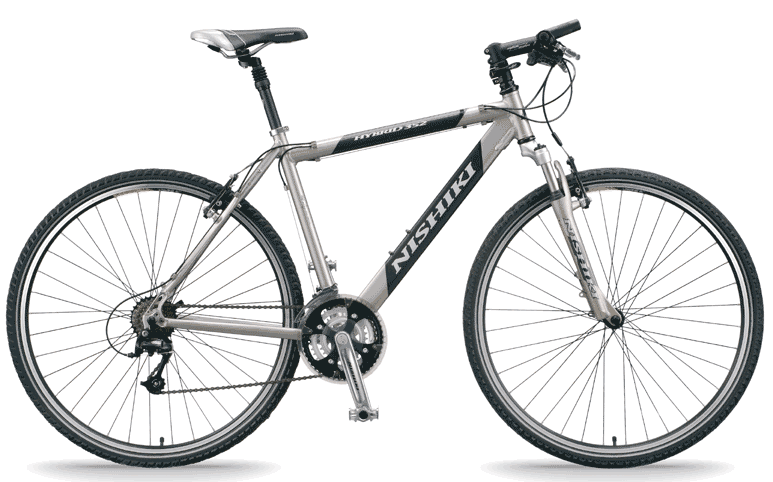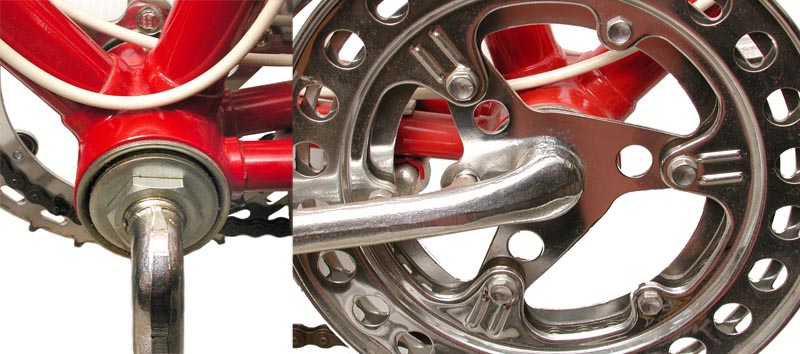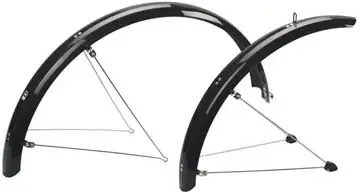I am often asked by friends what to look for when choosing a bicycle. The short answer is: look for a bike that fits, is inexpensive, and it works. In this post I will tell you what I look for in a used bicycle. If you are looking for a new bicycle, it is acceptable to ask bike shop staff their opinions as most local bike shop staff are trustworthy (Performance and Dicks Sporting Goods are NOT local bike shops).
Three Types of Bicycles:
Road Bike

These bikes feature the "rams horn" handlebars, skinny tires, and derailleur gears. Rams horn are also called drop handlebars. The reason this type of handlebar is made is to have multiple hand positions during a ride. You will find that most road bikes will put the rider in a more uncomfortable, but more aerodynamic position with their handlebar height lower than or about seat level. If you are inclined, you can buy a new stem to make the handlebar higher and ride at a more upright posture. Other people prefer to turn the horns upward because its cheaper and easier to do, but if you're going to resort to that then you might as well start with another type of bicycle. The skinny tires are great for roads because there is less rolling resistance, but it is important to keep those tires fully inflated to prevent pinch flats. Most of these skinnier tires are 100 PSI or greater. The higher pressure also helps with less rolling resistance. The wheel size of newer road bikes is 700c. Older road bikes have 27" wheels, but you can usually swap it out for a 700c wheel if you'd like to upgrade your wheels. More on that later.
Mountain Bike

These bicycles are probably best known for a straight handlebar, knobby tires, and shock absorbers (springs on cheaper bikes). First off I'd like to point out that for general riding on streets, shock absorbers aren't all that useful. Bicycles with a rear suspension are slightly less efficient as far as power transfer than hard tail bicycles. Bicycles with rear suspension are also harder to mount fenders and a luggage rack to, which are two essentials for every day cycling. Front suspension doesn't have any of these shortfalls, but unless you're doing some hardcore stump jumping, suspension in general isn't going to do much for you. Mountain bikes are sturdy general purpose bicycles. Knobby tires can be switched out for high pressure slick tires if you just want less rolling resistance.
Hybrid/ Comfort Bike

Similar to a mountain bike in that they have a straight handlebar. Most of these bicycles are built for a more upright and comfortable riding posture and have tires that are wider than road bikes, but skinnier and less knobby than mountain bikes. They are good for general purpose riding and I'd recommend this type of bicycle for someones first bicycle purchase.
Fitting your bicycle:
Bicycle fit is very important to selecting a bicycle. Generally you should have a 2-3 inches between your crotch and the top tube (for straight across top tubes) and for sloping top tubes that is still 2-3 inches over the effective top tube (see picture). For a website that will give you a ballpark of what size bicycle you're looking for click here. When looking at bicycle on craigslist, ask sellers to measure the frame size to save yourself travel time. You can even send them the picture (the one that that includes the words frame size) below in the email.


Now that you know about the different types of bicycles, I will include some quality indicators. These are things that I look for to determine whether or not one used bicycle is better than another.
Bottom bracket/Crank
American Bottom Bracket


American bottom brackets are an older style of bottom bracket and feature a one piece crank called an Ashtabula crank. The bottom bracket (the part of the frame that the crank goes through) is slighly larger to allow a single piece crank to be installed. These indicate a cheaper bicycle.


European bottom brackets indicate a higher quality bike frame that is usually slightly lighter. As you can see pictured above, the bottom bracket part of the frame is slightly smaller than the American counterpart and the crank that goes with it bolts onto a square tapered spindle. This type of bottom bracket allows for different types of cranks to be used and newer spindles and bearings are sold and replaced as a whole cartridge making them easier to service.
Steel Rims vs Aluminum
Like American style bottom brackets, steel wheel rims are now only featured on the cheapest bicycles. Steel rims do not brake as well as aluminum rims, they weigh more, and bend easier. This is the reason I said you can upgrade your wheels on a road bike because older road bikes sometimes feature 27" steel wheels. Get a bicycle with aluminum rims. If you unsure if the rim is steel or not, stick a magnet on it. Be aware that upgrading a wheelset is going to cost over $100, so you might as well start out with some good wheels when looking for a bicycle. Another thing to know about are double-walled aluminum wheels which are less likely to bend than single walled ones.
Assessing the condition of the bicycle:
Take a crank and spin it backwards to see if the chain is seized. Inspect the tire sidewalls and tread for wear. Squeeze the brakes and try to push the bicycle forward. Do you think these brakes will bring you to a complete stop within half a car length? Are the rims bent? Take the wheel and spin it. Can you see or feel a wobble side to side or an up and down hop? At this point you should probably take the bicycle for a spin around the block to see how it fits. Cycle through all the gears and listen and feel for any chain skipping.
Things to add to your new-to-you bicycle
Now that you purchased a used bicycle, the things listed below will make your riding experience better.
Fenders:

If you ever find yourself on wet roads, you will need these. Look for full fenders that go around the wheel.
Lights:
Get a good LED headlight that is greater than 300 lumens.
Get a good LED headlight that is greater than 300 lumens.
For a tail light I recommend you get the brightest LED blinkie you can find.
Luggage Rack:

Get one for the back. Get a front luggage rack and hold even more stuff. You can put a milk crate on it to carry lots of stuff. Unfortunately most rear luggage racks you buy in the United States are not strong enough to support a passenger, because most cyclists want to be single forever I guess :/
Panniers:

Carry stuff on your bicycle, not your back! Keep in mind that water resistance is market jargon that means absolutely nothing. If you need waterproof panniers, get some vinyl ortlieb ones. I try not to drop brand names much, but there aren't many offerings of waterproof panniers.
Better Saddle
Almost all bicycles come with terrible saddles. I recommend a cutout style saddle that is vinyl like this one pictured. Cloth saddles will rip and wear quickly. Don't opt for anything super skinny or extremely wide. Wide saddles will chafe. Skinny saddles are uncomfortable for obvious reasons. Get a saddle that has its widest point about an inch or two wider than your sit bones.

Strong lock
If you live in an urban area, make sure you invest in a hardened steel chain or U-Lock. Good brands are Onguard and Kryptonite. ABUS is even better. Keep in mind that any lock can be defeated, but most people don't bother busting through hardened steel locks.


That is everything I can think of for how to buy a bicycle. Suggestions? Leave a comment.